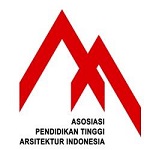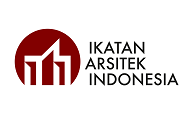Optimization of Construction Material Inventory Using Material Requirement Planning
Abstract
ABSTRAK: Pengelolaan persediaan material yang efisien sangat penting dalam proyek konstruksi untuk menghindari keterlambatan, pembengkakan biaya, serta kekurangan dan kelebihan material. Penelitian ini menyelidiki optimalisasi pengelolaan persediaan material menggunakan metode Material Requirements Planning (MRP), dengan fokus pada teknik Lot Sizing—Lot for Lot (LFL) dan Part Period Balancing (PPB). Studi kasus dilakukan pada pembangunan Kantor Kementerian Agama di Banda Aceh. Penelitian ini menargetkan material beton bertulang, seperti semen, pasir, dan besi tulangan, yang merupakan bahan penting bagi proyek tersebut. Data primer dikumpulkan melalui observasi lapangan dan wawancara, sementara data sekunder diperoleh dari dokumentasi proyek, termasuk Bill of Materials (BOM), jadwal, dan rincian biaya. Dengan menggunakan MRP, penelitian ini menghitung kebutuhan material, jadwal pengadaan, dan biaya untuk teknik LFL dan PPB. Hasil penelitian menunjukkan bahwa teknik LFL secara signifikan mengurangi biaya dan meningkatkan efisiensi dibandingkan dengan metode PPB. Pada lantai pertama, teknik LFL menghasilkan penghematan biaya sekitar 51,9% dibandingkan dengan metode PPB. Demikian pula, untuk lantai kedua, penghematan biaya sekitar 72,2%. Penelitian ini menyimpulkan bahwa teknik LFL merupakan teknik yang optimal untuk pengelolaan persediaan material dalam proyek konstruksi, memastikan ketersediaan material tepat waktu dan biaya penyimpanan minimal. Temuan ini memberikan kerangka praktis untuk meningkatkan efisiensi pengadaan dan menawarkan wawasan berharga bagi proyek konstruksi di masa depan yang ingin mengurangi biaya dan meningkatkan keandalan penjadwalan.
ABSTRACT: Efficient material inventory management is critical in construction projects to avoid delays, cost overruns, and both shortages and surpluses of materials. This study investigates the optimization of material inventory management using the Material Requirements Planning (MRP) method, focusing on Lot Sizing techniques—Lot for Lot (LFL) and Part Period Balancing (PPB). A case study was conducted on the construction of the Ministry of Religious Affairs Office in Banda Aceh. The research targeted reinforced concrete materials, such as cement, sand, and rebar, which are crucial for the project. Primary data was collected through field observations and interviews, while secondary data was obtained from project documentation, including the Bill of Materials (BOM), schedules, and cost breakdowns. Using MRP, the study calculated material requirements, procurement schedules, and costs for both LFL and PPB techniques. The findings revealed that the LFL technique significantly reduces costs and improves efficiency compared to the PPB method. For the first floor, the LFL technique resulted in a cost saving of approximately 51.9% compared to the PPB method. Similarly, for the second floor, the cost savings were around 72.2%. This study concluded that LFL is the optimal technique for material inventory management in construction projects, ensuring timely availability and minimal storage costs. These findings provided a practical framework for improving procurement efficiency and offered valuable insights for future construction projects seeking to reduce costs and enhance scheduling reliability.
Keywords
Full Text:
01-07 PDFReferences
M. R. Manavazhi and D. K. Adhikari, "Material and equipment procurement delays in highway projects in
nepal," International Journal of Project Management, vol. 20, no. 8, pp. 627-632, 2002.
A. Opoku, J. Deng, A. Elmualim, S. Ekung, A. A. Hussien, and S. B. Abdalla, "Sustainable procurement in
construction and the realisation of the sustainable development goal (sdg) 12," Journal of cleaner production,
vol. 376, p. 134294, 2022.
J. Wang, Z. Wang, and H. Liu, "Multi-objective stochastic time-cost-quality optimization for construction
projects based on the reliability theory," KSCE journal of civil engineering, vol. 27, no. 11, pp. 4545-4556,
M. Basheer, F. Elghaish, T. Brooks, F. P. Rahimian, and C. Park, "Blockchain-based decentralised material
management system for construction projects," Journal of Building Engineering, vol. 82, p. 108263, 2024.
R. Guchhait, M. Sarkar, B. Sarkar, L. Yang, A. AlArjani, and B. Mandai, "Extended material requirement
planning (mrp) within a hybrid energy-enabled smart production system," Journal of Industrial Information
Integration, vol. 42, p. 100717, 2024.
A. Segerstedt, "Cover-time planning/takt planning: A technique for materials requirement and production
planning," International Journal of Production Economics, vol. 194, pp. 25-31, 2017.
A. Nakazawa, S. Sakane, and T. Takaki, "Multi-phase-field modeling and high-performance computation
for predicting material microstructure evolution during sintering," Journal of Materials Research and
Technology, vol. 34, pp. 1803-1816, 2025.
M. O. Awati and I. N. D. P. Putra, "Material planning analysis with material requirement planning method in
high-rise building projects," Sustainable Civil Building Management and Engineering Journal, vol. 1, no. 3,
pp. 16-16, 2024.
O. A. Olaniyi and P. S. Pugal, "Optimising inventory management strategies for cost reduction in supply
chains: A systematic review," Jurnal Akuntansi dan Bisnis: Jurnal Program Studi Akuntansi, vol. 10, no. 1,
pp. 48-55, 2024.
O. B.-K. Nwadigo, N. Naismith, A. GhafFarianHoseini, A. GhaffarianHoseini, and J. Tookey, "Construction
project planning and scheduling as a dynamic system: a content analysis of the current status, technologies
and forward action," Smart and Sustainable Built Environment, vol. 11, no. 4, pp. 972-995, 2022.
R. A. C. Leuveano, H. M. Asih, M. I. Ridho, and D. A. Darmawan, "Balancing inventory management:
Genetic algorithm optimization for a novel dynamic lot sizing model in perishable product manufacturing,"
Journal of Robotics and Control (JRC), vol. 4, no. 6, pp. 878-895, 2023.
E. Lingga, M. Mubarak, and C. Z. Oktaviani, "Aplikasi teknik lot sizing pada proyek gedung laboratorium
kebencanaan universitas syiah kuala," Teras Jurnal: Jurnal Teknik Sipil, vol. 11, no. 2, pp. 487-498, 2021.
L. Wang, Y. Zeng, Y. Xu, M. Chi, and H. Wu, "The effect of blockchain on construction supply chain
resilience: A mediated moderation model," Ain Shams Engineering Journal, vol. 16, no. 2, p. 103253, 2025.
R. F. Aziz and S. M. Hafez, "Applying lean thinking in construction and performance improvement,"
Alexandria engineering journal, vol. 52, no. 4, pp. 679-695, 2013.
B. Werth, J. Karder, A. Beham, and K. Altendorfer, "Simulation-based optimization of material requirements
planning parameters," Procedía Computer Science, vol. 217, pp. 1117-1126, 2023.
Y. Tadayonrad and A. B. Ndiaye, "A new key performance indicator model for demand forecasting in
inventory management considering supply chain reliability and seasonality," Supply Chain Analytics, vol. 3,
p. 100026, 2023.
D. Setiawan, "Analisa persediaan bahan material bangunan dengan menggunakan metode economic order
quantity (eoq)(studi kasus: Pekerjaan renovasi gedung aula tahap i lembaga penjaminan mutu pendidikan
(lpmp) jl. cipto mangunkusumo km. 2 Samarinda seberang kalimantan timur)," KURVA MAHASISWA, vol. 11,
no. l,pp. 746-761,2021.
A. H. Lee, H,-Y. Kang, C.-M. Lai, and W.-Y. Hong, "An integrated model for lot sizing with supplier selection
and quantity discounts," Applied Mathematical Modelling, vol. 37, no. 7, pp. 4733-4746, 2013.
L. Abuhilal, G. Rabadi, and A. Sousa-Poza, "Supply chain inventory control: A comparison among jit, mrp,
and mrp with information sharing using simulation," Engineering Management Journal, vol. 18, no. 2, pp.
-57, 2006.
T.-Q. Nguyen, E. C. Lou, and B. N. Nguyen, "A theoretical bim-based framework for quantity take-off to
facilitate progress payments: the case of high-rise building projects in Vietnam," International Journal of
Building Pathology and Adaptation, vol. 42, no. 4, pp. 704-728, 2024.
B. Gilngor and G. Leindecker, "Digital technologies for inventory and supply chain management in circular
economy: A review study on construction industry," in International Conference" Coordinating Engineering
for Sustainability and Resilience ". Springer, 2024, pp. 700-709.
L. Sagban§ua and M. N. Alabay, "An mrp model for supply chains," International Business Research, vol. 3,
no. 4, pp. 124-131,2010.
A. Alsehaimi, A. Waqar, K. A. Alrasheed, A. S. Bageis, H. Almujibah, O. Benjeddou, and A. M. Khan,
"Building a sustainable future: Bim's role in construction, logistics, and supply chain management," Ain
Shams Engineering Journal, vol. 15, no. 12, p. 103103, 2024.
M. Juszczyk, "Construction work efficiency analysis—application of probabilistic approach and machine
learning for formworks assembly," Applied Sciences, vol. 13, no. 9, p. 5780, 2023.
D. A. Rossit, F. Tohmé, and M. Frutos, "A data-driven scheduling approach to smart manufacturing," Journal
of Industrial Information Integration, vol. 15, pp. 69-79, 2019.
R Manmatharasan, G. Bitsuamlak, and K. Grolinger, "Ai-driven design optimization for sustainable
buildings: A systematic review," Energy and Buildings, p. 115440, 2025.
A.-H. M. H. Al-Aidrous, N. J. Hern, Y. Rahmawati, M. Jahja, K. W. Yusof, N. A. W. A. Zawawi, C. Utomo
et al., "Critical factors influencing inventory and procurement system of infrastructure projects," Journal of
Civil Engineering and Management, vol. 28, no. 8, pp. 634-645, 2022.
DOI: https://doi.org/10.26618/j-linears.v8i1.17116
Copyright (c) 2025 Jurnal Linears

This work is licensed under a Creative Commons Attribution-NonCommercial-NoDerivatives 4.0 International License.

Jurnal Linears is licensed under a Creative Commons Attribution-NonCommercial-NoDerivatives 4.0 International License.










